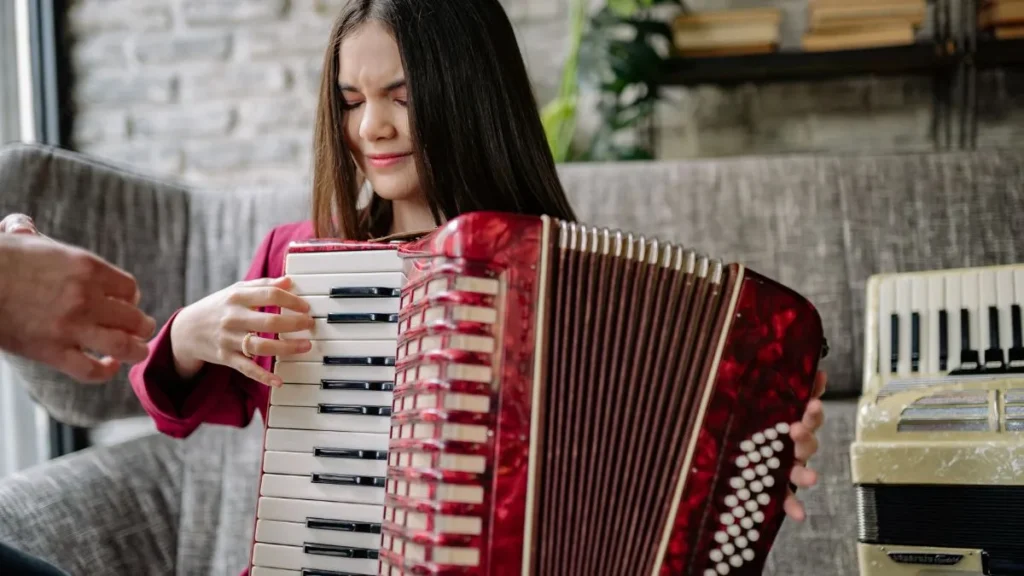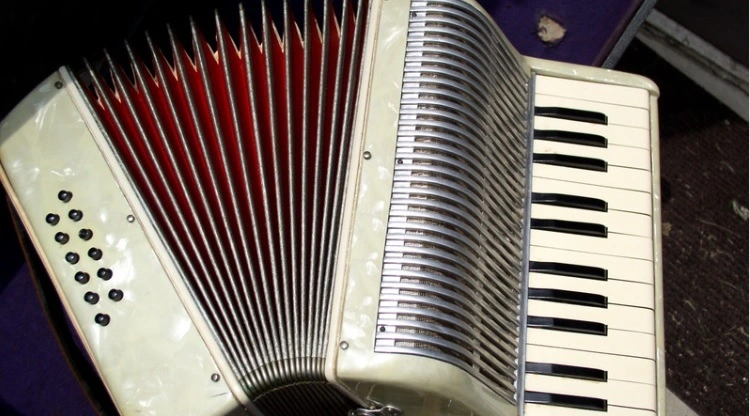Embarking on the journey to master the art of accordion playing requires dedication, practice, and a few key tips and tricks up your sleeve. Focus on developing proper hand placement and posture to ensure optimal control over the instrument. Pay attention to bellows control – mastering this aspect is crucial for achieving dynamic expression in your playing.
Next, work on building finger dexterity through regular exercises and scales. Practice transitioning smoothly between chords to enhance your overall performance fluidity. Experiment with different tempos, rhythms, and styles of music to broaden your musical capabilities. Utilize resources such as online tutorials, sheet music, and instructional videos to expand your repertoire and knowledge base. Seek guidance from experienced accordion players or instructors for personalized feedback and advice tailored to your skill level.
History of Accordion
This has a rich history that dates back to the early 19th century. It was invented in Vienna by Cyril Demian, who patented the instrument in 1829. The design of this instrument evolved over time, with improvements made to enhance its sound and playability.
Originally known as the “Handharmonika,” the accordion quickly gained popularity across Europe and beyond. Its versatility and unique sound captured the hearts of musicians and audiences alike. The instrument found its way into various music genres, from classical to folk to jazz. As it spread throughout different cultures, regional variations of this instrument emerged, each with its own distinct characteristics and playing styles.
Among these, the concertino—a smaller and more delicate variant—stood out for its compact design and specialized use in certain classical and chamber music compositions. This became an integral part of traditional music in countries like France, Italy, Russia, and Mexico.
Use of Accordion in Various Music Genres
Accordion is a versatile instrument that has found its way into various music genres, adding a unique and distinctive sound to each. In traditional folk music, this is often featured in lively polkas, waltzes, and other dance tunes, bringing joy and energy to the music. In jazz music, this has been embraced for its ability to create complex harmonies and improvisations. Artists like Art Van Damme and Richard Galliano have showcased the accordion’s versatility in this genre by incorporating it into their dynamic performances.
Popular music genres such as pop, rock, and even hip-hop have also seen the accordion make appearances in modern songs. Its nostalgic charm adds depth and emotion to these contemporary tracks, proving that it can adapt to any musical style. Classical music has not been immune to the allure of the accordion either. Composers like Astor Piazzolla have integrated this instrument into classical compositions with great success, showcasing its range and expressive capabilities in a more structured setting.

Unique and Unusual Accordions
The enthusiasts may be familiar with the standard piano and button accordions, but did you know that there are unique and unusual variations of this versatile instrument? One such example is the chromatic accordion, which offers a more extensive range of tones compared to traditional models. The bandoneon, commonly used in tango music, features a square shape and distinctive sound.
Another intriguing variation is the diatonic accordion, popular in folk music due to its limited key options that create a distinct folkloric sound. For those looking for something truly out of the ordinary, there are even electric accordions that blend traditional acoustic elements with modern technology.
Accordion in Traditional Music
This has been a staple instrument in traditional music around the world. In countries like Ireland, Scotland, and France, the accordion plays a vital role in capturing the essence of folk tunes and dances. Its rich sound adds depth to reels, jigs, and waltzes, creating an authentic atmosphere that resonates with listeners.
In Eastern European cultures such as Russia and Ukraine, this is synonymous with celebratory events like weddings and festivals. Its versatile nature allows musicians to effortlessly switch between lively polkas and soulful ballads. The lively melodies produced by the accordion evoke a sense of joyous camaraderie among participants. In South America, specifically Argentina and Brazil, the bandoneon—a type of button accordion—is prominent in tango music. The melancholic yet passionate tones of this instrument convey the raw emotions inherent in this dance form.
Accordion in Jazz
In Jazz has a rich history dating back to the early 20th century when it found its place alongside other instruments in this vibrant genre. Known for its versatility, the accordion adds a unique texture and dynamic to jazz music.
Influential jazz musicians like Art Van Damme and Richard Galliano have showcased the accordion’s ability to swing and improvise within the complex rhythms of jazz compositions. With its bellows-driven sound, the accordion can create soulful melodies or upbeat grooves that seamlessly blend with traditional jazz instruments. Accordionists in jazz often employ techniques such as chord voicings, trills, and tremolos to add depth and emotion to their performances. The instrument’s expressive capabilities make it a versatile choice for solo improvisations or as part of a larger ensemble.
Accordion in Popular Music
This has found its way into popular music genres, adding a unique and captivating sound to various songs. In pop music, this is often used to create a nostalgic or folk-inspired atmosphere that resonates with listeners. Artists like Mumford & Sons and Arcade Fire have incorporated the accordion into their music, giving their songs an authentic and organic feel.
With its ability to evoke emotions and set the mood, this has become a versatile instrument in popular music. From catchy melodies to soulful ballads, this adds depth and texture to songs across different styles within the genre. Its distinct sound can be heard in mainstream hits as well as indie tracks, showcasing its enduring appeal among musicians and audiences alike.
Accordion in Classical Music
This instrument, often associated with folk and popular music, has also made its mark in the realm of classical music. In this genre, the accordion’s versatility shines through as it adds a unique texture to orchestral pieces and chamber music compositions.
Classical composers have utilized the instrument’s expressive capabilities to create rich and emotive works that captivate audiences worldwide. Accordion virtuosos have tackled challenging classical repertoire, showcasing the instrument’s potential for intricate phrasing and dynamic performances.
From Baroque to contemporary classical music, the accordion continues to evolve as a respected member of ensembles and solo acts alike within this prestigious genre. Its ability to evoke emotion and convey complex musical ideas makes it a valuable asset in interpreting classical masterpieces with flair and finesse.
Tips for Mastering Accordion Playing
- Are you looking to enhance your accordion playing skills? Here are some tips to help you master this versatile instrument.
- First and foremost, practice regularly. Consistent practice is key to improving your technique and mastering complex pieces. Set aside dedicated time each day to work on different aspects of playing the accordion.
- Focus on developing proper hand positioning and posture. A correct stance can greatly impact your performance by allowing for better control over the keys and buttons.
- Work on building finger strength and dexterity through exercises that target specific movements required for playing the accordion. This will help you navigate the keyboard more efficiently.
- Experiment with different styles of music to expand your repertoire and challenge yourself creatively. Playing a variety of genres can also improve your overall musicianship.
- Seek guidance from experienced accordion players or instructors who can provide valuable feedback and mentorship as you progress in your musical journey.
Tricks to Improve Accordion Performance
To elevate your instrument performance, there are a few tricks and techniques you can incorporate into your practice routine.
- Focus on mastering hand coordination by practicing scales and arpeggios with both hands separately before combining them. This will help improve dexterity and fluidity in your playing.
- Another trick is to work on dynamics and expression. Experiment with varying the volume and intensity of your playing to add depth and emotion to your music. Pay attention to phrasing, accents, and pauses to create a more dynamic performance.
- Additionally, try learning new styles of music outside of your comfort zone. This will not only expand your musical repertoire but also challenge you to adapt different techniques that can be applied creatively in various genres.
- Record yourself playing regularly. Listening back allows you to identify areas for improvement such as timing issues or inconsistent dynamics. Reflecting on these recordings can guide you towards refining your skills and enhancing your overall performance ability.
Advanced Techniques to Enhance Skills
To truly master the art of accordion playing, it’s essential to explore advanced techniques that can enhance your skills and take your performance to the next level. One technique is mastering bellows control – understanding how to manipulate airflow with precision can greatly improve dynamics and expression in your music.
Another important skill is developing finger dexterity through exercises and scales. Practicing complex patterns can help increase speed and accuracy, allowing you to navigate intricate passages with ease. Additionally, exploring different articulation techniques such as staccato, legato, and accents can add depth and nuance to your playing. Experimenting with various registers on the accordion can also expand your tonal palette, creating a richer sound experience for both you and your audience. Incorporating improvisation into your practice routine can foster creativity and spontaneity in your performances.
Accordion Maintenance and Care
Taking care of your instrument is essential to ensure it stays in top playing condition. Regular maintenance can help prevent issues like sticky keys or air leaks that may affect your performance. Start by keeping your accordion in a cool, dry place away from direct sunlight and extreme temperatures.
To maintain the bellows, gently wipe them down with a soft cloth to remove any dust or debris. It’s also important to check for loose screws or buttons that may need tightening. Avoid using harsh chemicals on the instrument as they can damage the finish – stick to mild soap and water when cleaning.
Conclusion
Mastering the art of playing the accordion is a rewarding journey filled with history, versatility, and endless possibilities. From its roots in traditional music to its vibrant presence in jazz, popular music, and classical compositions, this instrument has proven itself to be a versatile and beloved instrument.
By exploring unique accordions, learning advanced techniques, and implementing proper maintenance practices, aspiring accordion players can enhance their skills and become true masters of their craft.









